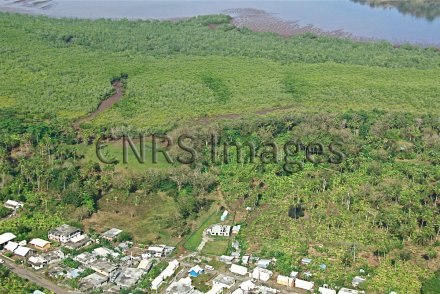Production year
2009

© François FROMARD/CNRS Images
20120001_0356
Site pilote de Malamani, baie de Chirongui, Mayotte. Les eaux usées domestiques du village de Malamani, au premier plan, sont collectées vers un décanteur, cuves bleu et blanche, au second plan au centre, puis rejetées après décantation vers la mangrove. Les taches vert sombre dans la première ceinture de mangrove (Rhizophoracées) soulignent l'emplacement des parcelles impactées par les eaux usées. L'azote polluant les eaux usées est absorbé par la végétation et favorise sa croissance tel un engrais. En aval, au dernier plan, le lagon de Mayotte est caractérisé par une grande biodiversité (coraux, cétacés, tortues).
The use of media visible on the CNRS Images Platform can be granted on request. Any reproduction or representation is forbidden without prior authorization from CNRS Images (except for resources under Creative Commons license).
No modification of an image may be made without the prior consent of CNRS Images.
No use of an image for advertising purposes or distribution to a third party may be made without the prior agreement of CNRS Images.
For more information, please consult our general conditions
2009
Our work is guided by the way scientists question the world around them and we translate their research into images to help people to understand the world better and to awaken their curiosity and wonderment.